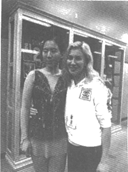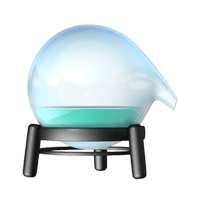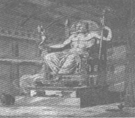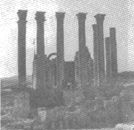本试卷共五道大题, 39道小题, 试卷满分为60分。
知识运用(共14分)
一、单项填空 (共6分, 每小题0. 5分)
从下面各题所给的A、B、C、D四个选项中, 选择可以填入空白处的最佳选项。
1. We plan to go boating in Beihai Park this Saturday morning. Would you like to join ________?
A. we B. us C. our D. ours
2. Our school held a sports meeting ________ September, 30.
A. at B. in C. to D. on
3. ________ I have difficulties in learning math, I never give up.
A. So B. Although C. Because D. Until
4. Daniel ________ in the same school since he came back from England.
A. stayed B. was staying C. will stay D. has stayed
5. -Eric, what did you do yesterday afternoon ?
-I ________ to the school reading room with Jack.
A. went B. have been C. will go D. am going
6. Don’t worry, mum! I’m feeling much ________ than yesterday.
A. good B. well C. better D. best
7. -My friends and I ________ Shanghai Disneyland this winter holiday.
-Have a good trip!
A. have visited B. visit C. visited D. will visit
8. -What were you doing when others were busy doing cleaning?
-I ________ mistakes in my test paper .
A. am correcting B. corrected C. was correcting D. correct
9. -Sam, ________ have you kept the book Journey to the West?
-For more than a week.
A. how often B. how many C. how long D. how far
10. -Jerry, I’ve heard that you are coming to Beijing.
-Yes. As soon as I ________ in Beijing, I will call you.
A. arrive B. arrives C. will arrive D. arrived
11. Our school has a long history and it ________ in 1907.
A. built B. build C. was built D. is built
12. -Could you tell me ________?
-I bought it in the shopping mall near my home.
A. where will you buy the camera B. where you will buy the camera
C. where did you buy the camera D. where you bought the camera
二、完形填空(共8分, 每小题1分)
阅读下面的短文, 掌握其大意, 然后从短文后各题所给的A、B、C、D四个选项中, 选择最佳选项。
Queen of the Ice

I get into position and take a deep breath The music starts and my mind focuses on one thing: my figure skating(花样滑冰) routine. Dressed in my shining blue dress and__13____ across the ice, I feel free.
I started figure skating again in 2018 after the PyeongChang Winter Olympic Games. However, relearning figure skating at an older age is not __14__. Balancing on those 1.5 mm wide steel blades(冰刀)and stepping onto the clear ice for the first time in years, feelings of excitement and panic overwhelmed(充满)me at the same time. I did not remember any of the __15____ or spins that I had learned as a child. To make my anxiety worse, kids much younger than me were doing double or triple rotation jumps(旋转跳跃)and difficult spin variations. I felt so out of place. Did I really __16____ here?
“You have as much right to be here as anyone else,” my Olympian coach encouraged me. I was very grateful that I had found a coach that treated me the same as her other students who competed internationally. Every day at practice, she __17____ me beyond my limits. The ice is as unforgiving as life. During the course of learning new jumps and spins, falls are unavoidable. Whenever I learn a move. I commit to practicing and falling for hours on end, and there would still be a large chance that I could not finish it
Many times I have asked myself, “Was it really worth it? So many hours of practice, and so much __18____ spent on coaching and skates, for what?” Despite these pains, every time I feel the wind rushing past my face as I glide across the ice, I am reminded of the reason that I started skating: this is the __19______ thing I will get to flying. The pain is temporary, but the joy of landing that jump I have worked on for months is something I would not __20______ for the world. Fall down seven times, get up eight!
13. A. flying B. skiing C. running D. walking
14. A. hard B. easy C. enjoyable D. possible
15. A. dances B. moves C. jumps D. falls
16. A. try B. work C. care D. belong
17. A. shows B. treats C. helps D. pushes
18. A. time B. energy C. money D. pains
19. A. fastest B. closest C. finest D. easiest
20. A. trade B. change C. earn D. give
阅读理解(共36分)
三、阅读下面短文,根据短文内容,从短文后各题所给的A、B、C、D四个选项中,选择最佳选项,并将答案填涂到答题卡上。(共26分,每小题2分)
A
Ancient Wonders | |
| Statue of Zeus The Statue of Zeus was built in Olympia, Greece in 457 B.C.. This statue was built to honor the Greek god Zeus. The statue was as tall as 13 meters! It was made of wood and decorated with gold and ivory. Unfortunately, the statue was destroyed by a fire and is no longer there for us to see. |
| Temple of Artemis This is located on the west coast of modern Turkey. Built around 550 B.C., the Temple of Artemis at Ephesus was considered the most beautiful structure on earth. It was built to honor the goddess of hunting. The temple was later burned down and now there is only a field where this wonder once stood. |
| Great Pyramid of Khufu Pyramids were built as tombs for the leaders of Egypt. This pyramid was built by King Khufu around 2560 B.C.. When it was built, its height was around 146 meters. But now it is only 137 meters. For a long time, the Great Pyramid was believed to be the tallest structure in the world. Many travelers still visit the Great Pyramid today. |
| Hanging Gardens of Babylon The Hanging Gardens of Babylon is special because people do not know for sure if it was real. Old books say the garden was built around 600 B.C.. These gardens were built by a king for his wife. Living in the desert, she missed the plants at her old home. The king wanted to make his queen like their new home more. |
21. Which wonder was built to honor the goddess of hunting?
A. Statue of Zeus. B. Temple of Artemis.
C. Great Pyramid of Khufu. D. Hanging Gardens of Babylon.
22. Which wonder was built for the king’s wife?
A. Hanging Gardens of Babylon. B. Great Pyramid of Khufu.
C. Statue of Zeus. D. Temple of Artemis.
23. Which wonder is still there for us to see?
A. Statue of Zeus. B. Temple of Artemis.
C. Great Pyramid of Khufu. D. Hanging Gardens of Babylon.
B
I always knew Felix was special. He had been Mrs. Raymond’s class pet for about 10 months. This summer, I was the lucky one who got to take him home. Felix, by the way, is a hamster(仓鼠).
As I said, I always knew he was special. Every school day when I checked on him, he would say, “Good morning, Tommy.” When I saw him sitting in his cage counting on his claws(爪子)during math class, I knew something was up for sure.
On the first day of summer, I took my pocket money and my mom to the pet store. I bought some tunnels(隧道)to add to Felix’s cage. Felix loved his tunnels. By the end of the first week, Mom said “Enough already.” so I stopped adding tunnels. There were 376 feet of them.
One night, I couldn’t fall asleep, so I went down to talk to Felix. He was running on his wheel. He apologized for not being able to chat, but he was trying to break a speed record. I watched for a while. I clocked him at 41 miles per hour.
The next night, Dad came down to watch. He had a brilliant idea. He fixed a generator(发电机)to Felix’s wheel. Now, Felix makes electricity for us. We haven’t had a bill from the electric company for two months.
Here’s another reason I knew Felix was special. Back in Room 144, whenever it was time for music, I would see Felix tapping(轻拍)his little claws against the bars of the cage.
Now that summer is almost over, I’m kind of sad about having to take Felix back to Mrs. Raymond. Dad says he’ll miss not having to pay any electric bills.
24. From Paragraph 2 we know that ________.
A. the writer was friendly to the class pet
B. the writer taught the class pet to say hello
C. the class pet taught us math at all times
D. the class pet worked as a guide in the classroom
25. The writer bought so many tunnels just because he/she _________.
A. liked to play hide-and-seek B. wanted to make Felix happy
C. decided to take exercise every day D. promised to feed Felix well
26. From the last paragraph we can learn that _________.
A. the writer might take Felix home next summer
B. the father would make money by producing electricity
C. Mrs. Raymond would buy more tunnels for Felix
D. there would be more class pets raised in the writer’s class
C
Early last year, a French art group known as Obvious stated that their artificial intelligence(AI) had managed to “create” art. Christie’s(佳士得拍卖行)was expecting less than $10,000. In the end, it was sold at $432,500!
The painting was the first piece of AI art to have been sold at auction(拍卖). Soon questions rang through the media: Is this art? Who is the artist? How about the owner? Are machines now creative, too?
All good questions-but too early. The technology is far from advanced, as Obvious suggested, because the public is completely confused about what AI is, and what it is able to do.
In fact, the painting was just one of the countless artworks AI could produce. It was the team behind Obvious that chose this one. And they got involved in the whole process. They first programed(编写程序) the AI, and then they chose 15,000 existing paintings to train the software. Connecting the painting with the algorithm(计算程序)was just clever marketing tool. AI did not produce the painting on its own at all.
Dozens of artists are using the same software as Obvious, but none of them are worried about being replaced. As they build the machine themselves and work with it every day, they know how limited it is. What interests the artists is co-creation: the way AI lets them go beyond their natural ability.
Artists also laugh at the idea that AI is creative. It certainly creates things, sometimes in new and effective ways, but it does so without a purpose. It is the artist who explains its output(输出). “You make a fire and produces interesting shapes, but in the end the fire is not creative. AI is a glorified(美化了的)campfire,” said one of the pioneers of using AI in art.
27. What can we know about the painting sold at auction?
A. It was created by a French artist alone.
B. It was sold at a much lower price than expected.
C. It was the first piece of AI art in the world.
D. It attracted a great deal of media attention.
28. Paragraph 4 mainly talks about __________.
A. what kind of paintings AI could create alone
B. how AI produced the painting in its own way
C. why the painting was connected with the algorithm
D. who made it possible for AI to create the painting
29. It can be inferred from the passage that the AI technology can ________.
A. produce countless artworks B. program on its own
C. think independently D. replace the artists
D
It seems that we have it backward in our society. We tend to look up to people who are under a great deal of stress, who can deal with lots of stress, and those who are under a great deal of pressure. When someone says, “I’ve been working really hard,” or “I’m really stressed out,” we are taught to admire, even copy what they do. In my work as a stress consultant(顾问)I hear the proud words “I have a very high tolerance(忍耐力;忍受力)to stress” almost every day. It probably won’t come as a surprise that when these stressed-out people first arrive at my office, more often than not, what they are hoping for are methods to raise their tolerance to stress even higher so they can deal with even more!
Luckily, there is a powerful law in our emotional environment that goes something like this: our present level of stress will be exactly that of our tolerance to stress. You’ll notice that the people who say, “I can deal with lots of stress” will always be under a great deal of it!So, if you teach people to raise their tolerance to stress, that’s exactly what will happen. They will accept even more responsibility until again, their__level__of__stress__matches__that__of__their__tolerance. Usually it takes a serious problem of some kind to wake up a stressed-out person to their own craziness-a great loss, a complete failure, or an unexpected illness-something happens that forces them to search for a new kind of method.
It may seem strange, but if you were to join in the stress management workshop, what you would probably learn is to raise your tolerance to stress. It seems that even stress consultants are stressed out!
What you want to start doing is noticing your stress early before it gets out of hand. When your schedule(日程安排)is getting out of hand, it’s a sign that it’s time to slow down and reconsider what’s important rather than power through everything on the list. When you’re feeling out of control and tired of all you have to do, rather than roll up your sleeves and “get to it,” a better method is to relax, take a few deep breaths, and go for a short walk. You’ll find that when you catch yourself getting too stressed out-early, before it gets out of control-your stress will be like the “snowball” rolling down the hill. When it’s small, it’s manageable and easy to control. Once it gathers more, however, it’s difficult, if not impossible, to stop.
There’s no need to worry that you won’t get it all done. When your mind is clear and peaceful and your stress level comes down, you’ll be more effective and you’ll have more fun. As you lower your tolerance to stress, you will find that you’ll have far less stress to deal with, as well as creative ideas for dealing with the stress that is left over.
30. People hoping to raise their tolerance will probably________.
A. shoulder fewer responsibilities B. have to deal with more stress
C. refuse to listen to the consultant D. manage to solve problems well
31. The underlined sentence in Paragraph 2 probably means_______.
A. the level of stress differs from their tolerance
B. the level of stress changes with their tolerance
C. the level of stress goes beyond their tolerance
D. the level of stress falls below their tolerance
32. What is the main idea of Paragraph 4?
A. We should follow our schedule and power through everything on the list.
B. Rolling the snowball down the hill can help us relax and feel less stressed.
C. It’s wise to notice the early sign of stress and manage it as soon as possible.
D. Going for a walk is a better choice when you are tired of what you’re doing.
33. Which of the following would be the best title for the passage?
A. Lower Your Tolerance to Stress
B. Turn to Your Consultant for Help
C. Better Your Emotional Environment
D. Get Close to Nature to Lower Stress
四、阅读短文,根据短文内容回答问题。(共10分,每小题2分)
Coming to a Full Stop
In the third century BC, the full stop, or period, was introduced by Greek literary critic Aristophanes of Byzantium. This punctuation mark(标点符号)is used to show the end of a sentence. However, the full stop has a different meaning to teenagers and those in their early 20s, who see this punctuation mark as a sign of anger. And there is a reason for that.
The younger generation has grown up using the texts as their primary means of communication. When sending messages, they tend to break up their thoughts by sending each one as a separate message, instead of using a full stop. Some have said the full stop is unnecessary when used in texting because the message is ended just by sending it.
According to the Telegraph, linguist(语言学家)Lauren Fonteyn of Leiden University in the Netherlands, tweeted(发推特): “If you send a text message without a full stop, it’s already obvious that you’ve concluded the message.” “So if you add that additional marker for completion, they will read something into it and it tends to be a falling intonation(语调)or negative tone.”
David Crystal, one of the world’s leading language experts, argues that the usage of full stops is being “revised(修改)in a really fundamental way.” In his book Making a Point, he says that the punctuation mark has become an “emotion marker” that reminds the recipient(接受者)that the sender is angry or annoyed.
Though the full stop has taken on a different meaning to the younger generation, experts have noted that it is important to take context(语境)into consideration. For example, using full stops in an email is perfectly acceptable and is not considered rude.
34. What is the full stop used to show?
35. How do teenagers see the meaning of the full stop?
36. Why have some young people said the full stop is unnecessary when used in texting?
37. Do Lauren Fonteyn and David Crystal agree with each other?
38. What’s the passage mainly about?
书面表达(共10分)
五、文段表达(共10分)
39. 根据中文和英文提示,完成一篇不少于60词的文段写作。文中已给出内容不计入总词数。所给提示词语仅供选用。请不要写出你的校名和姓名。
假如你是红星中学志愿者李华。本周日,你将带领来你校访问的英国学生参观国家博物馆(the National Museum)。为了参观活动能顺利进行,请你给他们的group leader, Peter用英语写一封邮件,内容包括:你们集合的时间和地点,你们在国家博物馆会进行一些什么活动,以及参观时的注意事项。
提示词语:school gate, video, Chinese paintings, exhibition, food and drinks
提示问题:1. When and where are you going to meet?
2. What are you going to do in the museum?
3. What rules should visitors follow there?
Dear Peter,
I am writing to tell you something about our visit to the National Museum. ____________
_____________________________________________________________________________
_____________________________________________________________________________
参考答案
一、单选
1-6 BDBDAC
7-12 DCCACD
二、完型
13-20 ABCD DCBA
三、阅读理解
21-23 BAC 24-26 ABA
27-29 DDA 30-33 BBCA
四、阅读表达
34. It is used to show the end of a sentence.
35. They see this punctuation mark as a sign of anger.
36. Because the message is ended just by sending it.
37. Yes.(Yes, they do.)
38. The change of the meaning of the full stop and the reason for that.
或:How the meaning of the full stop changes and why.
或:The different meanings of the full stop and the reason for its change
五、文段表达
Possible version:
Dear Peter,
I am writing to tell you something about our visit to the National Museum. We are going to visit the National Museum this Sunday. We are going to meet at the school gate at 9:00 am. Then we will go there by coach.
We will have a variety of interesting activities. First, we will watch a video, which introduces Chinese paintings. Then we will admire an exhibition about the famous paintings by Qi Baishi and Zhang Daqian. Finally, we will have some time to enjoy other exhibitions.
As visitors, we have some rules to follow. First, we are not allowed to run or shout in the museum. Second, we mustn’t eat or drink anything there. Finally, we can’t take any photos there.
I wish you all will have a nice time there.




